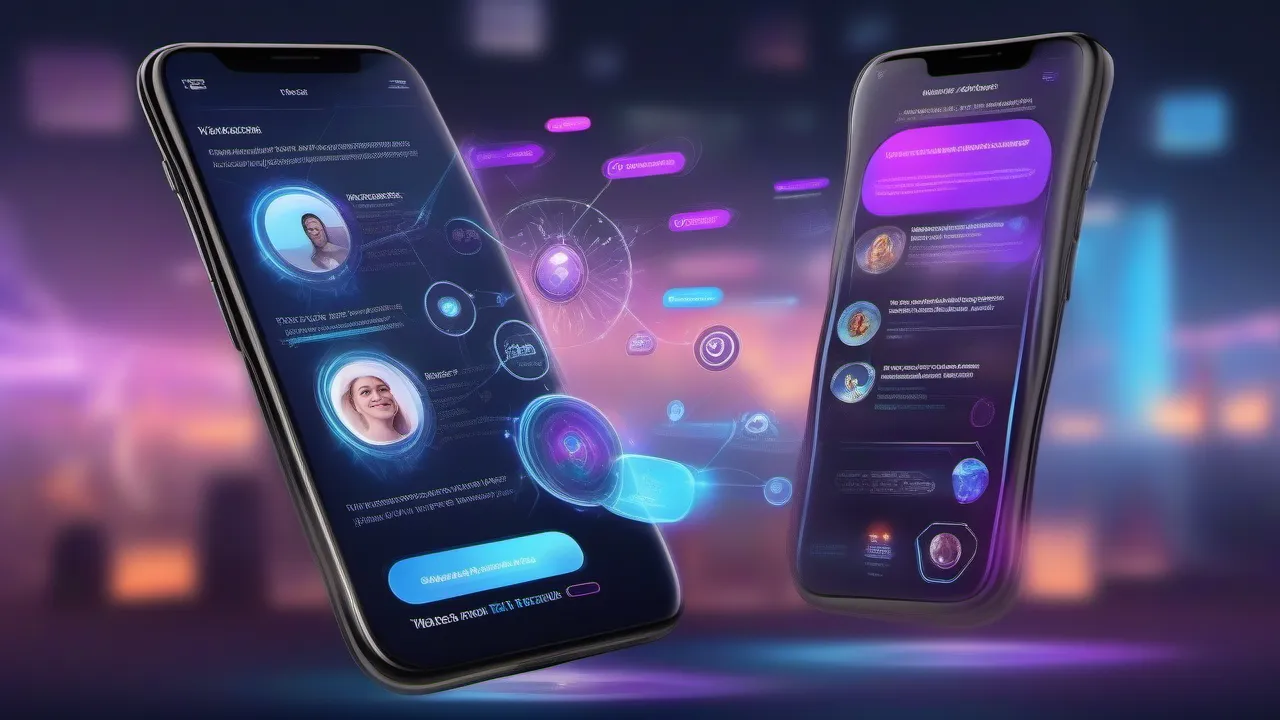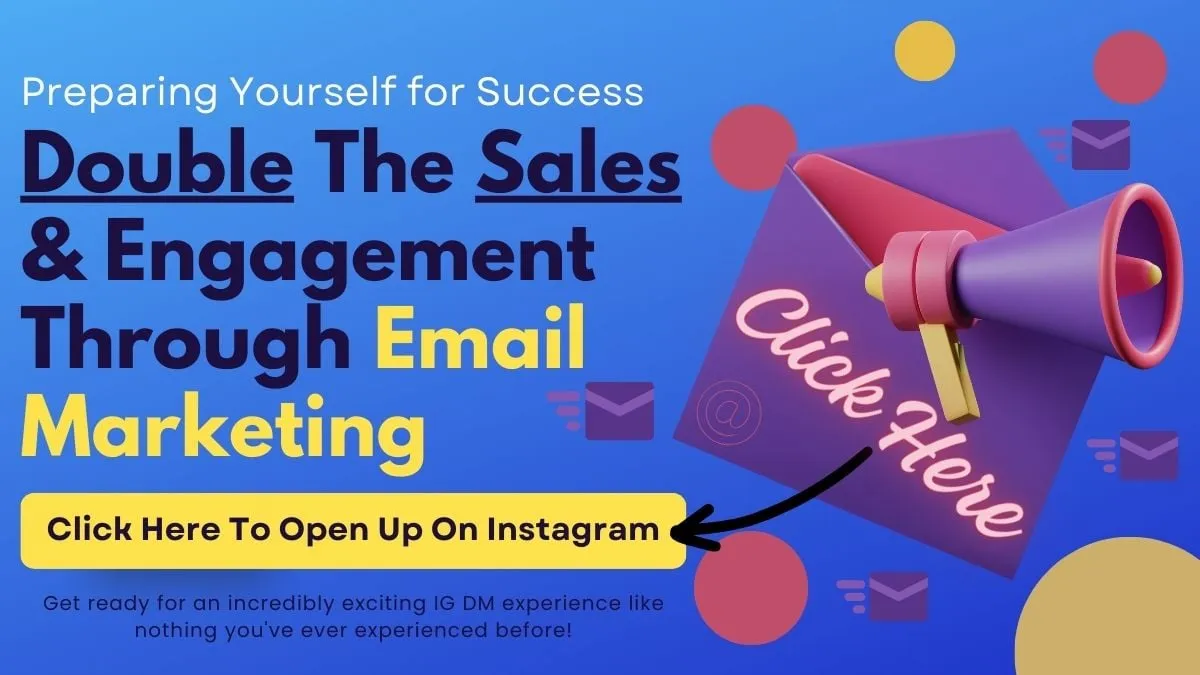The Follow-Up in Email Marketing is Crucial for Successful Sales

Grab the king of email follow up here
In today's fast-paced digital landscape, the power of a well-executed follow-up in email marketing is the secret weapon for driving sales and building lasting customer relationships.
As digital marketers and entrepreneurs, we're constantly seeking ways to stand out in a crowded inbox and make a meaningful impact on our audience.
This comprehensive guide is designed to transform your approach to follow-up in email marketing, turning every sent email into a compelling opportunity to engage, persuade, and convert.
Whether you're a seasoned marketer or an up-and-coming entrepreneur, the insights and strategies shared here will elevate your email game, ensuring that your messages not only get opened but also act as a catalyst for sales and enduring customer loyalty.
Get ready to dive into the art and science of follow-up, where each email becomes a strategic masterpiece in your marketing arsenal.
Follow-up Plays a Crucial Role in Sales

The concept of follow-up in sales is often misunderstood as a mere afterthought in the customer journey. However, it's a pivotal element that can significantly influence the outcome of your marketing efforts.
Let's break down what follow-up truly means in the context of sales and why it's a game-changer for digital marketers.
Follow-up is More than just a Buzzword
Follow-up in sales is not just a buzzword; it's a strategic approach to maintaining contact with potential customers.
It involves a series of communications aimed at nurturing leads, building relationships, and ultimately guiding them towards a purchase decision.
The Importance of Follow-up in Sales
The role of follow-up in the sales process is multifaceted. It helps keep your brand top-of-mind, provides additional information to prospects, addresses concerns, and builds a foundation for long-term customer relationships.
Key Statistics: The Impact of Follow-Up on Sales Success
Various studies and statistics reveal the significant impact of follow-up on sales success.
For instance, persistently following up with leads can increase conversion rates, as a substantial percentage of customers are not ready to buy on the first contact.
Crafting Effective Follow-Up Emails: A Step-by-Step Guide

Creating effective follow-up emails is an art that requires a blend of tact, timing, and personalization.
This section provides a comprehensive guide to crafting emails that not only capture attention but also encourage positive responses, which is essential for digital marketers aiming to enhance their sales and customer engagement.
The Anatomy of a Successful Follow-Up Email
A successful follow-up email contains several key elements: a compelling subject line, personalized content, a clear call to action, and a tone that resonates with the recipient.
Understanding and implementing these components can significantly increase the effectiveness of your follow-up efforts.
Personalization: The Key to Engagement
Personalization involves more than just including the recipient's name. It involves tailoring the message to reflect the recipient's needs, interests, and previous interactions with your brand.
This approach shows that you value them as individuals, leading to higher engagement rates.
Timing and Frequency: When and How Often to Follow Up
The timing and frequency of follow-up emails are critical. Sending them at the right time can mean the difference between a response and being ignored. It's important to find a balance that keeps you on the recipient's radar without being intrusive.
Advanced Strategies for Email Follow-Ups

To stand out in the crowded inbox of a digital consumer, advanced strategies are essential.
This section explores innovative techniques that go beyond basic follow-up practices, focusing on how digital marketers and entrepreneurs can leverage these strategies to enhance their email marketing campaigns and drive sales.
Leveraging Automation Tools
The use of automation tools has revolutionized follow-up email management. They allow for scheduling emails, segmenting audiences, and personalizing messages at scale.
By automating mundane tasks, marketers can focus on crafting more impactful, strategic content.
Segmenting Your Audience for Targeted Follow-Ups
Audience segmentation is key to effective follow-ups.
By dividing your audience based on demographics, behavior, or purchase history, you can tailor your messages to resonate with each segment, increasing the relevance and effectiveness of your follow-ups.
A/B Testing: Refining Your Follow-Up Strategy
A/B testing is a powerful tool to optimize your follow-up emails.
By testing different elements of your emails, such as subject lines, content, and call-to-actions, you can understand what resonates best with your audience and refine your strategy accordingly.
Overcoming Common Follow-Up Challenges

Navigating the complexities of follow-up in email marketing often involves overcoming a range of challenges.
This section addresses common obstacles faced by digital marketers and entrepreneurs and provides practical solutions to enhance the effectiveness of their follow-up strategies.
Dealing with Non-Responsive Leads
Non-responsive leads are a common challenge in email marketing. The key is to understand the reasons behind the lack of response and to adjust your approach accordingly.
This might involve changing your message, offering more value, or finding the right timing to re-engage.
Balancing Persistence with Professionalism
Striking the right balance between being persistent and maintaining professionalism is crucial. It's important to follow up consistently, but without being overly aggressive or intrusive.
Respect for the recipient's time and preferences is paramount.
Using Analytics to Understand Follow-Up Performance
Analytics play a vital role in understanding the performance of your follow-up efforts.
By analyzing open rates, click-through rates, and conversion rates, you can gain insights into what works and what doesn't, allowing you to refine your strategy for better results.
Integrating Follow-Up into Your Overall Email Marketing Strategy

Integrating follow-up effectively into your overall email marketing strategy is crucial for creating a cohesive and impactful customer journey.
This section explores how digital marketers can seamlessly incorporate follow-up tactics into their broader marketing plans, ensuring a consistent and engaging experience for their audience.
Aligning Follow-Up with Your Marketing Goals
The first step in integration is aligning your follow-up efforts with your overall marketing goals. Whether it's increasing sales, boosting engagement, or nurturing leads, your follow-up strategy should directly contribute to these objectives.
The Synergy Between Content and Follow-Up
There's a natural synergy between the content of your initial marketing messages and your follow-up emails.
Ensuring consistency in tone, messaging, and branding across all communications strengthens your brand's presence and reinforces your message.
Measuring the ROI of Your Follow-Up Efforts
Measuring the return on investment (ROI) of your follow-up efforts is essential.
By tracking metrics such as conversion rates, customer lifetime value, and engagement levels, you can assess the effectiveness of your follow-up strategy and make data-driven decisions for optimization.
Real-World Examples of Successful Follow-Up Campaigns

Learning from real-world examples is invaluable for understanding the practical application of follow-up strategies in email marketing.
This section highlights successful follow-up campaigns, offering insights into what worked, common pitfalls to avoid, and how these strategies can be adapted to different industries.
Case Studies: What Worked and Why
Analyzing case studies of successful follow-up campaigns reveals key strategies and tactics that led to their success.
These examples provide a blueprint for what effective follow-up looks like in action, from the timing and content of the emails to the overall strategy.
Learning from Failures: Common Pitfalls to Avoid
Equally important is understanding where others have stumbled.
Examining failed follow-up attempts helps in identifying common pitfalls, such as lack of personalization or poor timing, and offers lessons on what to avoid in your own campaigns.
Industry-Specific Follow-Up Tactics
Different industries may require unique follow-up approaches.
This section explores how various sectors like retail, B2B services, and technology have tailored their follow-up strategies to meet the specific needs and behaviors of their target audiences.
The Psychology Behind Effective Follow-Ups

Understanding the psychology behind effective follow-ups can significantly enhance the impact of your email marketing strategies.
This section delves into the psychological principles that influence buyer behavior and decision-making, offering insights into how to craft follow-up emails that resonate on a deeper level with your audience.
Understanding Buyer Behavior and Decision-Making
Grasping the nuances of buyer behavior and decision-making processes is crucial. This involves recognizing the factors that influence a buyer's journey, such as emotional triggers, pain points, and the perceived value of your offering.
The Power of Persuasion in Follow-Up Emails
The art of persuasion plays a pivotal role in follow-up emails.
Employing persuasive techniques like social proof, scarcity, and authority can significantly increase the likelihood of a positive response and move the prospect closer to a purchase decision.
Building Trust and Rapport Through Follow-Up
Building trust and rapport with your audience is essential for successful follow-ups. This can be achieved through consistent, honest communication, demonstrating an understanding of the customer's needs, and providing value in every interaction.
Writing Tips for Compelling Follow-Up Emails

Crafting compelling follow-up emails is a blend of art and science. This section provides essential writing tips for creating emails that not only capture attention but also motivate action.
These tips are particularly beneficial for digital marketers and entrepreneurs looking to enhance their email marketing effectiveness and drive meaningful engagement.
Crafting Subject Lines That Get Opened
The subject line is the first impression of your email. It needs to be intriguing yet clear, sparking curiosity while staying relevant to the content. A well-crafted subject line significantly increases the chances of your email being opened.
The Importance of Clarity and Conciseness
Clarity and conciseness are key in follow-up emails. Your message should be straightforward and to the point, making it easy for the recipient to understand your intent and the action you desire them to take.
Call to Action: Guiding Prospects to the Next Step
A clear call to action (CTA) is crucial in guiding your prospects towards the next step. Whether it’s scheduling a call, visiting a website, or making a purchase, your CTA should be prominent, persuasive, and aligned with your overall marketing goals.
Leveraging Technology for Smarter Follow-Ups

In today's digital age, leveraging technology is key to executing smarter and more efficient follow-up strategies.
This section explores the best tools and software available for email follow-ups, how integrating CRM systems can enhance tracking and personalization, and the use of data for crafting more effective follow-up communications.
The Best Tools and Software for Email Follow-Ups
A plethora of tools and software are available to streamline the follow-up process.
From email automation platforms to AI-driven analytics tools, selecting the right technology can significantly enhance the efficiency and effectiveness of your follow-up campaigns.
Integrating CRM Systems for Better Tracking
Customer Relationship Management (CRM) systems are invaluable for tracking interactions with prospects and customers.
Integrating your follow-up efforts with a CRM system allows for a more organized, data-driven approach, ensuring no lead falls through the cracks.
Utilizing Data for Personalized Follow-Ups
Data is the cornerstone of personalized follow-up strategies.
By analyzing customer data, you can tailor your follow-up messages to align with individual preferences, behaviors, and purchase history, leading to higher engagement and conversion rates.
The Future of Follow-Up in Email Marketing

As we look towards the future, it's essential to anticipate and adapt to the evolving landscape of email marketing.
This final section explores emerging trends, changing consumer expectations, and strategies to stay ahead in the competitive world of digital marketing.
Understanding these future directions will empower marketers and entrepreneurs to innovate and maintain the effectiveness of their follow-up strategies.
Emerging Trends and Predictions
The integration of omnichannel strategies, increased emphasis on personalization, and advancements in AI are likely to shape the future of follow-up in email marketing.
Staying abreast of these trends will be crucial for marketers looking to maintain relevance and effectiveness.
Adapting to Changing Consumer Expectations
The expectations of consumers are constantly changing as they increasingly seek personalized, relevant, and timely communications.
Adapting your follow-up strategies to meet these expectations will be key to maintaining engagement and driving conversions.
Staying Ahead in a Competitive Landscape
In a competitive landscape, staying ahead means continuously refining your follow-up strategies. This involves being open to experimentation, leveraging data-driven insights, and always prioritizing the customer experience.
Conclusion: Elevating Your Sales with Strategic Follow-Ups
In wrapping up, the journey through the intricacies of follow-up in email marketing reveals a landscape rich with opportunities for growth, engagement, and sales enhancement.
This article has navigated through the essential aspects of crafting effective follow-up strategies, from understanding the psychology behind consumer responses to leveraging the latest technological tools.
Expanding on the Importance of Personalization
At the heart of successful follow-up is personalization. It's not just about addressing recipients by name but about creating a connection that resonates with their individual needs and preferences.
Personalization, when done right, transforms a simple follow-up email into a powerful tool for engagement and conversion.
The Role of Continuous Learning and Adaptation
The digital marketing world is in constant flux, with new trends and consumer behaviors emerging regularly. Staying informed and adaptable is crucial.
Continuous learning and the willingness to tweak and refine your strategies can lead to significant improvements in your follow-up efforts and overall marketing success.
Integrating Follow-Up with Broader Marketing Strategies
Effective follow-up should not exist in isolation but as an integral part of your broader marketing strategy.
It should align with your brand's voice, your marketing goals, and your customer journey maps. This integration ensures a seamless experience for your customers and maximizes the impact of your marketing efforts.
Looking Ahead: The Future of Follow-Up in Email Marketing
As we look to the future, it's clear that follow-up in email marketing will continue to evolve.
Embracing emerging technologies like AI and machine learning, understanding the shifting landscape of consumer expectations, and staying ahead of industry trends will be key to maintaining the effectiveness of your follow-up strategies.




